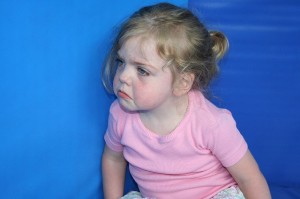Kid-Bumps
If it weren’t for “Kid-Bumps”, we would all be in trouble, and perhaps parents, in general would not be needed. But we all know that leaving our kids alone for too long is likely going to lead to trouble and here is why. A “Kid–Bump” is when your child does something so outrageous that you as their parent are “forced” to finally set that limit to prevent the behavior from continuing. Call it the “straw that broke the Camel’s back”, Kid–Bumps are motivators to parents to get involved and prevent your child from doing anything else that might lead to negative consequences. But, it is important that the parent be able to identify the bump or even know that a bump exists. All kids have bumps. They are suppose to.
Kid-Bumps are so important that if they did not exist and then, stopped, children would not develop into high functioning individuals who were successful. Take breast feeding. The single greatest event which finally helps a breast feeding mother to wean her child onto a bottle is getting bit on the nipple just once by a teething infant. The “intense” pain involved in this “Kid-Bump ”, motivates the mother to push her child into one of the first experiences of independent functioning, bottle feeding. This begins with the parent holding (often in safe distance from their breast) the bottle and then eventually teaching the child to hold it his or herself which then leads to a wonderful feeling of self-control for the child. This is a win/win for the parent and the child.
I think the first “Kid-Bump” is likely when a child does not sleep through the night and cries and screams keeping up new parents. Sleep deprivation for new parents can be overwhelming and often make the couple ask the ultimate parent question – “ why did we have kids again”? .
 The good news about “Kid-Bumps” is that there are correct answers to how to solve the problem in question and if dealt with early and efficiently, is a forward step in the right direction until the new “Kid-Bump” comes along soon enough. We have learned to accept pot holes when we drive, so why not accept “Kid-Bumps” as normal and fixable.
The good news about “Kid-Bumps” is that there are correct answers to how to solve the problem in question and if dealt with early and efficiently, is a forward step in the right direction until the new “Kid-Bump” comes along soon enough. We have learned to accept pot holes when we drive, so why not accept “Kid-Bumps” as normal and fixable.
Toilet training is another “Kid-Bump”. Usually, something happens that finally makes the parent take away their child’s diaper or pull-up and force the child to actually use a toilet. It could be that the child is teased for having a diaper beyond the age of two or three, the child is using their extra baggage for attention, or they have to leave for college. Enough already, take off the diapers and really see if they will urinate on the floor before the toilet. If they do, take away something until they do and they will likely pick the toilet over their bed. These movements (pun intended) are red flags to the parent of “help me ”. When you do, you help your child move ahead developmentally and they are happier and healthier and they can never blame you for letting them do stupid things.
Conquering Kid-Bumps reduces acting out, increases compliance, and leads to less parental depression. But, perhaps the hardest part about dealing with Kid-Bumps is that the parent MUST be the parent and not a child afraid of the boogeyman. “They won’t like me anymore if I make them do that”. Wrong. They will hate you for letting them control you! YOU MUST SET LIMITS AND ACTUALLY DO IT. Seriously, how many times have you seen a child, or a teenager for that matter, set their own limits successfully? Not often! You have to do it for them. They can’t by themselves because they feel helpless. That is why they are acting out. Parenting is the toughest job in the world. It’s 24/7 forever. Accept it, don’t blow it, and have fun doing it.
However, development does have a natural “healthy” sequence from Infancy through Adulthood with normal developmental achievements along the path. Those that stay on the healthy path lead happy lives. Those that either get stuck or never move ahead, remain unfulfilled and generally unhappy. So, Kid-Bumps are signals sent from kids to adults saying “help me smooth out the journey to happiness”.
“Teen-Bumps” is a separate segment for next week. Same ideas and answers but tougher to deal with because, well, they are teens. To be continued….
______________________________________________________________
Dr. Keith Kanner is a Licensed and Board Certified Clinical Child, Adolescent, and Adult Psychologist and Psychoanalyst. In addition to a full-time private practice in Rancho Santa Fe, California, he is an Assistant Clinical Professor of Psychiatry in the School of Medicine at the University of California San Diego where he teaches both human development and also trains medical students how to better understand and relate to their patients. He also serves as the Director of Clinical Counseling for La Jolla Country Day School in La Jolla, California, and is a Clinical Professor at The San Diego Psychoanalytic Society and Institute. Dr. Kanner also sits on the National Board of Directors for Kids Korps USA, which is the largest organization in the country that teaches children and adolescents the importance of volunteering to help the community at large. As a father of three children, he is also a dedicated baseball, football, and soccer coach.










You must be logged in to post a comment Login